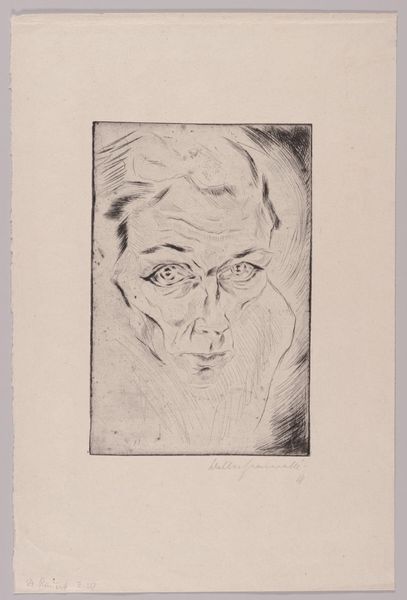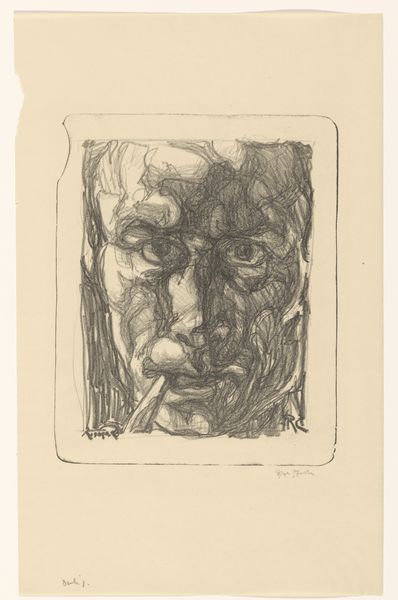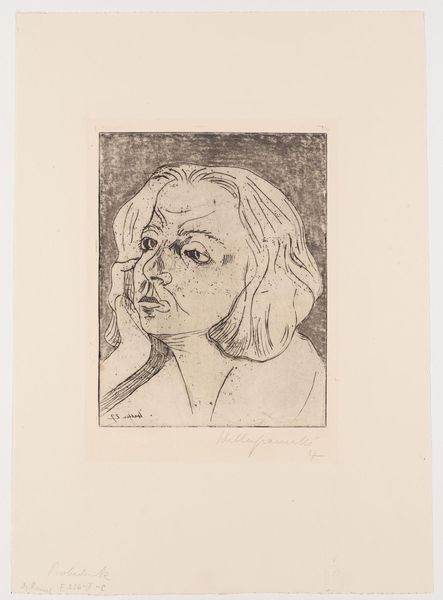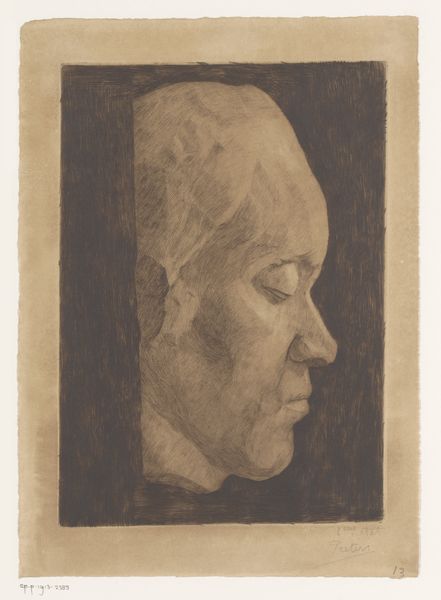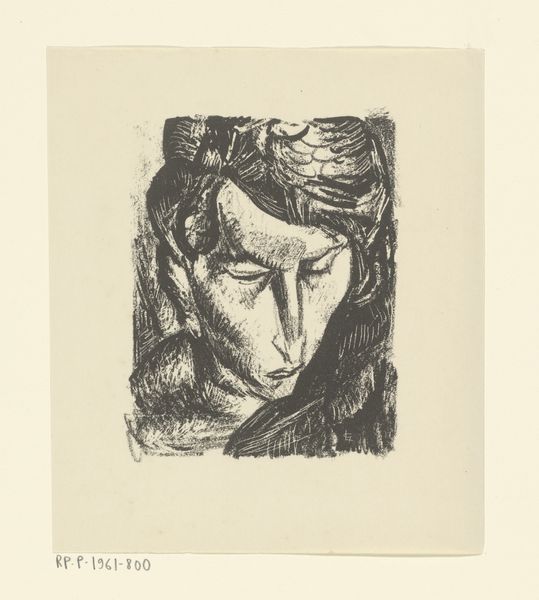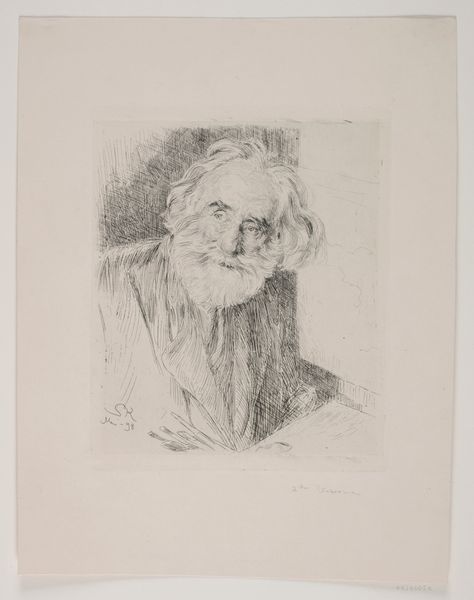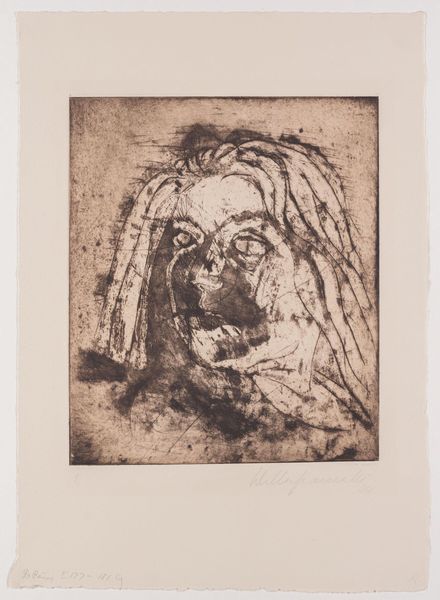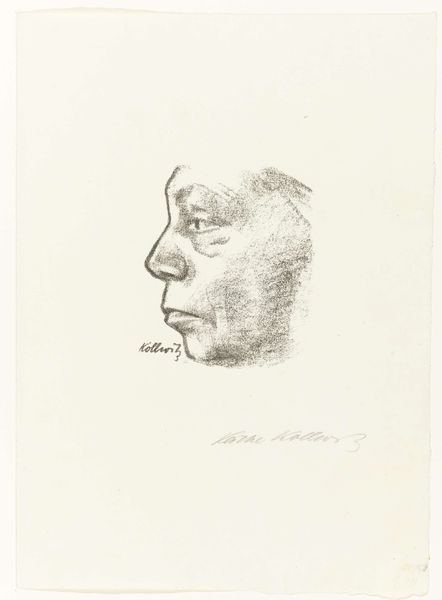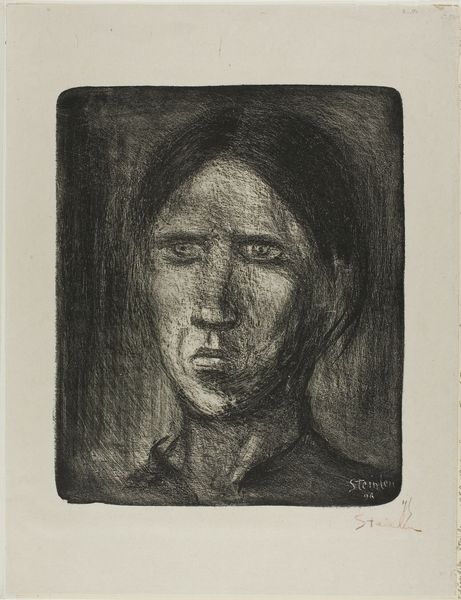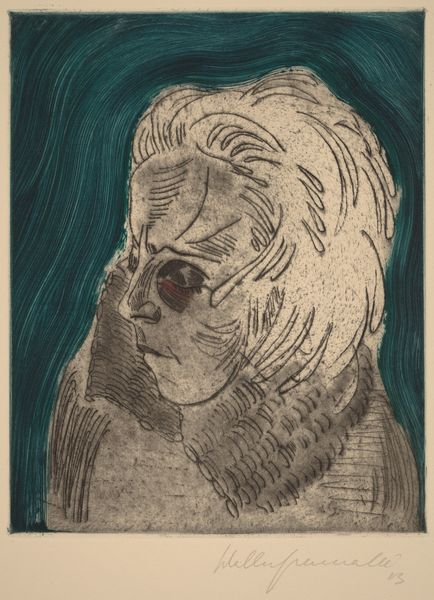
Dimensions: 346 mm (height) x 269 mm (width) (bladmaal), 201 mm (height) x 184 mm (width) (billedmaal)
Editor: Here we have Kathe Kollwitz's self-portrait, created in 1934 using lithography. The tight focus on her face is striking. There's an undeniable weight in her expression. What stands out to you most in this piece? Curator: I’m immediately drawn to the artist’s gaze. Look at the depths she conveys with simple lines. The way her hand almost blends into the forehead, suggesting a weary mind. What emotional quality do you find resonating in this self-representation? Editor: There's a profound sadness, maybe even resignation? I get a sense of someone carrying a heavy burden. Curator: Indeed. Consider the socio-political climate of 1934 Germany. Kollwitz’s work often carried social commentary, and by this time, she was facing increasing scrutiny from the Nazi regime. Do you see echoes of broader cultural anxieties reflected in this intimate self-portrait? The somber monochrome also evokes what memories and associations in the viewer? Editor: That adds another layer of understanding. It’s like the personal and the political are intertwined, isn’t it? The monochrome amplifies the starkness of her expression and also emphasizes that what is to come may be somber or grey. Curator: Precisely. Kollwitz masterfully uses the visual language of her time to project a deeper, collective suffering. Think of other images you’ve seen of grief or strength. How does this echo or differ? Editor: I never would have thought of it that way. It really deepens the emotional impact knowing the history. Curator: Art allows a journey across time, doesn't it? By delving into an artist’s symbolism and context, our understanding evolves. Editor: Absolutely. I'll never look at this self-portrait the same way again. Thanks for sharing that with me.
Comments
No comments
Be the first to comment and join the conversation on the ultimate creative platform.

